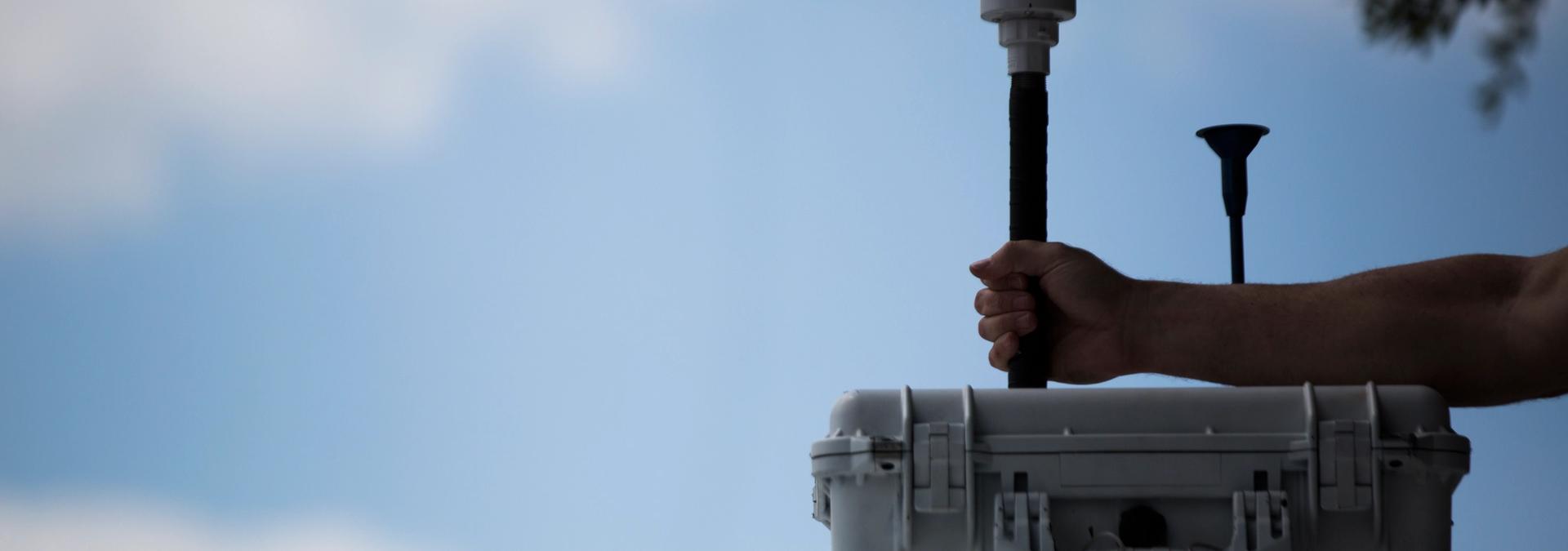
In Houston, the new normal should include more efforts to reduce air pollution
Most Houstonians believe a lot more should be done to control air pollution, the 2020 Kinder Houston Area Survey shows.
Once Harris County Judge Lina Hidalgo’s order to stay home to slow the spread of the coronavirus went into place in late March, Gunnar Schade, an atmospheric scientist at Texas A&M University, started studying the air quality. With less daily driving, smoggy cities under similar orders across the world saw their skies start to clear. Schade wondered about Houston.
But not much changed, he found. Through April 8, Schade saw no overall reduction in smog-forming nitrogen oxide. In fact, fine particulate matter, a widespread air pollutant that is linked to heart and lung disease, appeared to get worse. Since April 20, smog, or ground-level ozone, has exceeded federal limits six times.
As Elena Craft, senior director for climate and health at the Environmental Defense Fund, told NPR, “If you take all the cars off the road and it doesn’t put a dent in your emissions inventory, then probably cars are not making up a lot of that.”
No, Houston’s air pollution did not go away while we stayed home.
Another bad year for air quality
Houston has never met the federal standards for smog. Last year, the region’s air was especially polluted. Between March 2019 and January 2020, six chemical disasters filled it with dark plumes of smoke for days and dangerous, cancer-causing air toxics like benzene and 1,3-butadiene. These disasters resulted in their own shelter-in-place orders for communities like Deer Park, Crosby, Groves and Port Neches.
In September, Tropical Storm Imelda led to the unauthorized release of more than 81,000 pounds of pollutants from petrochemical facilities, including even more benzene and 1,3-butadiene. “There is no safe level of exposure to these pollutants,” Dr. Loren Hopkins, the City of Houston’s chief environmental science officer said at the time.
Even as some Houstonians have stopped driving as much during the pandemic, Houston hasn’t stopped being an industrial city. Production at the ExxonMobil complex in Baytown, where two of those disasters happened last year, has increased during the pandemic. Since the start of Judge Hidalgo’s order, there have been 81 recorded incidences of benzene released at levels twice as high as what typically is seen in Houston’s ambient air.
There are currently 12 chemical and plastics manufacturers along the Ship Channel — including in La Porte, Channelview and Pasadena — that emit ethylene oxide, a gas used to sterilize medical equipment, which poses an extreme risk of cancer in at least 15 census tracts in our region, including in Harris County.
Residents aren’t satisfied with efforts to curb pollution
Most Houstonians believe a lot more should be done to control air pollution, the 2020 Kinder Houston Area Survey shows. Nearly 63% of respondents rated the control of air pollution “fair” or “poor.” It appears that this perception is shared across ages, neighborhoods and genders. Air pollution isn’t confined to ZIP codes, after all, and neither, it appears, is the perception that we need clean air for a healthy, thriving city.
This year, after six chemical disasters, and 42 debilitating days with ozone pollution so high that the Texas Commission on Environmental Quality (TCEQ) advised Houstonians to stay inside as much as possible, the number who rated pollution control “poor” was higher than it’s been in a decade — suggesting a new urgency to make the investments now to implement the policies and strengthen the governmental institutions that can protect people and their communities from harmful air pollution.
For too long, that hasn’t happened, and Texans have suffered. Since 2011, TCEQ has penalized fewer than 3% of illegal releases of air pollution. In 2017, during the brunt of Hurricane Harvey, when 340 tons of industrial air pollution was being spewed from facilities with failing equipment into neighborhoods like Manchester and Galena Park, the air monitoring that TCEQ conducted happened too late and didn’t create usable data, a federal watchdog later concluded.
More investment is needed to make improvements
Air pollution’s a complex problem, but it’s solvable. Effective government action has established smart policies and enforced them, and that’s saved so many lives. Investing more now in reducing emissions, installing the right pollution controls, increasing monitoring both in communities and at facilities and strengthening enforcement will protect people’s health — and it will pay off. The Clean Air Act has led to $2 trillion in benefits.
There are reasons for Houstonians to hope. After a third-party analysis found “gaps” in Harris County’s ability to respond to chemical disasters, Judge Hidalgo invested nearly $12 million in new technology and staff. The Harris County District Attorney Kim Ogg added four new attorneys to prosecute environmental crimes.
This year, TCEQ has also proposed placing a brand-new monitor for fine particulate matter in a part of the city where Houstonians appear to breathe levels above what health scientists say should be the new, stronger federal standard. That monitor would measure whether the levels are too high in fact — and would then compel the state to implement a plan to reduce them. That would be just one step since Houston needs at least twice as many monitors in the regional network, but it’s a step toward cleaner air and healthier bodies. Strong data can save lives.
Vulnerable populations are impacted the most
Right now, many important conversations are happening about our health and safety, about the ways the coronavirus pandemic will change cities going forward, from how we move around to whose labor is essential. The pandemic should also change the conversation about air pollution.
In Houston, the communities suffering the most from COVID-19 are the communities of color that already are surrounded by too many oil refineries, chemical facilities, metal recyclers and concrete batch plants. It’s almost as though pollution were a preexisting condition.
Before the pandemic posed this new threat, these were the Houstonians who couldn’t go for a walk on ozone action days, who couldn’t take the bus to the clinic because the exhaust aggravated their asthma, who had to pay out of pocket for ambulance trips to the emergency room when they suffered a heart attack.
An ‘F’ for air quality in Harris County
How will the pandemic continue to change Houstonians’ perceptions about the air we breathe?
We will have to overcome the belief that it’s good enough the way it is. Just one month after Schade completed his analysis, the Chronicle reported, “Houston’s air pollution is returning to normal levels.”
Wait, wait, wait. “Normal levels” of air pollution”? Houston’s levels of fine particulate matter, a new analysis by the Environmental Defense Fund and the Harvard School of Public Health found, contributed to more than 5,000 deaths and nearly $50 billion in economic damages in 2015 alone. Our smog led the American Lung Association to give Harris County an “F” — again — in this year’s State of the Air report. “If you live in Harris County,” they write, “the air you breathe may harm your health.”
The air you breathe may harm your health if you live in Harris County.
That isn’t normal. The Houston Area Survey shows Houstonians overwhelmingly agree. No, the air isn’t clean. Not yet.
This article originally appeared on Urban Edge, the blog for the Kinder Institute for Urban Research at Rice University.
West is a senior communications specialist for the Environmental Defense Fund. You can follow him on Instagram and Twitter @allynwest.
STAY UP TO DATE
The quality of our newsletter is considered satisfactory and poses little or no risk.
SUBSCRIBE

